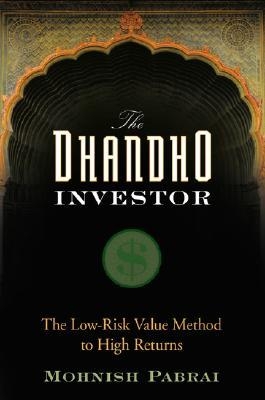The Dhandho Investor: The Low-Risk Value Method to High Returns by Mohnish Pabrai

Chapter 1
Patel Motel Dhandho
Asian Indians make up about 1 percent of the population of the United
States—about three million people. Of these three million, a relatively
small subsection is from the Indian state of Gujarat—the birthplace of
Mahatma Gandhi. And a very small subsection of Gujaratis, the Patels, are
from a tiny area in Southern Gujarat. Less than one in five hundred
Americans is a Patel. It is thus amazing that over half of all the motels in
the entire country are owned and operated by Patels. What is even more
stunning is that there were virtually no Patels in the United States just 35
years ago. They started arriving as refugees in the early 1970s without
much in the way of education or capital. Their heavily accented, broken
English speaking skills didn’t improve their prospects either. From that
severely handicapped beginning, with all the odds stacked against them, the
Patels triumphed. Patels, as a group, today own over $40 billion in motel
assets in the United States, pay over $725 million a year in taxes, and
employ nearly a million people. How did this small, impoverished ethnic
group come out of nowhere and end up controlling such vast resources?
There is a one word explanation: Dhandho.
Dhandho (pronounced dhun-doe) is a Gujarati word. Dhan comes from
the Sanskrit root word Dhana meaning wealth. Dhan-dho, literally
translated, means “endeavors that create wealth.” The street translation of
Dhandho is simply “business.” What is business if not an endeavor to create
wealth?
However, if we examine the low-risk, high-return approach to business
taken by the Patels, Dhandho takes on a much narrower meaning. We have
all been taught that earning high rates of return requires taking on greater
risks. Dhandho flips this concept around. Dhandho is all about the
minimization of risk while maximizing the reward. The stereotypical Patel
naturally approaches all business endeavors with this deeply ingrained
riskless Dhandho framework—for him it’s like breathing. Dhandho is thus
best described as endeavors that create wealth while taking virtually no risk.
Not only should every entrepreneur seek to learn from the Patel Dhandho
framework, but also the primary audience for this tome—investors and
allocators of capital. Dhandho is capital allocation at its very finest. If an
investor can make virtually risk-free bets with outsized rewards, and keep
making the bets over and over, the results are stunning. Dhandho is how the
Patels have exponentially compounded their net worths over the past 30-
odd years.
I’m getting ahead of myself. Sit back, relax, grab a cool one, and mellow
out. You’re about to begin a remarkable journey—one that I hope is as
rewarding and profitable for you as it has been for me and generations of
Patel businessmen.
Gujarat lies along the Arabian Sea with a large, desirable coastline and
several natural harbors. The Tropic of Cancer cuts right through the state.
Over the centuries, it has always been an ideal location for trade with
neighboring Asian and African countries—it has served as a melting pot of
many different cultures over its rich history. The Parsis, fleeing religious
persecution in Iran, landed in Gujarat as refugees in the twelfth century and
were warmly received. Similarly, the Ismailis arrived in the first half of the
nineteenth century from Iran. For several centuries, Gujaratis were very
used to traveling to, and trading with, their Asian and African neighbors.
Patels originally were known as patidars—loosely translated as
landlords. Most villages in Gujarat had a patidar appointed by the ruler who
was responsible for collecting land taxes, providing security, and running a
streamlined farming operation. In medieval times, these patidars were
chosen on the basis of their savvy management and farming skills. Patels
usually had large families, and as the land was subdivided into smaller and
smaller fragments for each son, farming became a tough way to make a
buck. In the late nineteenth and early twentieth centuries, Ismailis and
Patels from Gujarat migrated in significant numbers to countries like
Uganda in East Africa. They went as traders or as indentured laborers to
help build the railroads.
The Dhandho Investor: The Low-Risk Value Method to High Returns by Mohnish Pabrai




